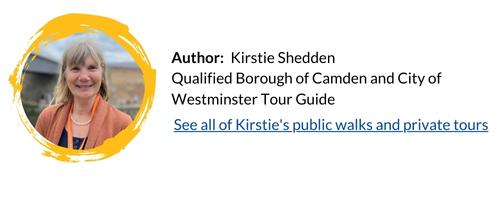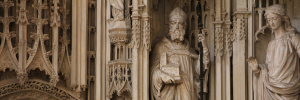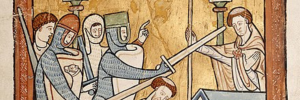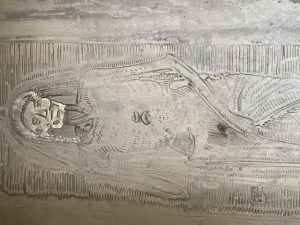Cheapside: A Historic Thoroughfare in the Heart of London
Cheapside stands as a historic thoroughfare in the heart of the City of London, stretching roughly between St Paul’s Cathedral and Old Jewry before transforming into Poultry at its eastern end. Throughout centuries, it served as one of the City of London’s largest marketplaces and evolved into a fashionable shopping destination during the 18th and 19th centuries. Today, traces of its bustling past are scant above ground, with St Mary le Bow church, a 17th-century landmark, being one of the few remaining older structures. Nevertheless, the collaborative efforts of archaeologists and historians have breathed life into the narrative of Cheapside’s historical significance.
Cheapside’s Roman Origins (47 AD)
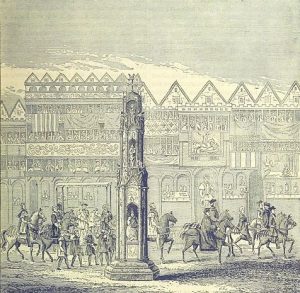
Dating back to 47 AD, a west-east road was constructed, a few years post the Roman invasion of Britain in 43 AD. Archaeological findings, such as timber drains alongside a Roman road near modern Cheapside, provide insights into this early period. This road traversed the Walbrook river via a wooden bridge, leading traffic to the Forum and Basilica—the primary administrative hub of Londinium. Timber-framed buildings, potentially the area’s initial shops, adorned the streets. Discoveries of coins, pottery, and writing tablets in the boggy remnants of the Walbrook river affirm that Cheapside was a thriving commercial centre two millennia ago. While life in simple timber houses lacked luxuries, the 3rd and 4th centuries witnessed the construction of grander homes around Poultry, showcasing the wealth of successful traders through mosaics and wall plaster.
Cheapside in Roman London
Following the departure of the Romans, the City of London seemed deserted, although St Paul’s Cathedral received its dedication in 604 AD through the efforts of Augustine, sent by the Pope to convert Saxon rulers to Christianity. The Saxons resided outside the City walls, establishing a significant settlement along the Strand and near present-day Covent Garden. Not until the 9th century did Cheapside begin its resurgence. Alfred the Great reintegrated the Saxons within the Roman Walls to safeguard against Viking attacks. Cheapside, slightly deviating from the old line of the main east-west Roman road but overlapping in places, was laid out west of the Walbrook river, along with narrow lanes leading to the River Thames.
Cheapside’s Resurgence in the Saxon Era (9th Century)
The term “Cheap” originates from the Anglo-Saxon word for market, indicating the commencement of trading in the late 800s. Wooden shops and houses once again lined the street. The names of roads branching southward from Cheapside reveal the goods sold in proximity during those early days, including Ironmonger Lane, Milk Street, and Bread Street. After William I’s conquest of England, London avoided ransacking, suggesting flourishing trade. Cheapside thrived, becoming a bustling hub.
Medieval Cheapside: A Lively and Chaotic Scene
If transported back in time to medieval Cheapside, one would find a lively and chaotic scene. Shops adorned both sides of the road, with increasingly tall wooden buildings featuring jetties overhanging the street, maximising space for the same-sized plots. The Drapers and Mercers, selling imported goods, would beckon, alongside shops offering leather goods, gold, silver jewellery, and more. Covered markets known as “selds” housed different stalls, offering bargains and quality assurance, as various trades belonged to guilds. In the 14th and 15th centuries, many guilds obtained charters from the King, enabling them to acquire property in the City and control their trade. Behind the shops stood some grand houses, contributing to the area’s architectural diversity.
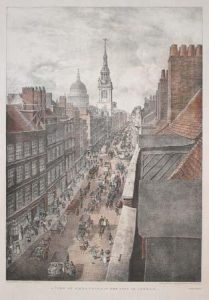
St Mary-le-Bow: A Landmark of Medieval Cheapside
A landmark that wouldn’t be overlooked in medieval Cheapside was St Mary-le-Bow, erected in 1080 as a peculiar for Lefranc, William’s new Norman archbishop of Canterbury. Serving as the site for ecclesiastical court proceedings, this large church on Cheapside asserted William’s authority. The church’s initial construction in Caen stone possibly inspired the name “Bow” due to its Norman arches. The church, despite facing destruction several times in the Middle Ages, was consistently rebuilt in the same location. Its bell, rung from the tower, signalled the curfew and wake-up times for work.
Everyday Life in Medieval Cheapside
The bustling medieval Cheapside presented a spectacle of horseback travellers, carts, and pedestrians selling water or milk. The Great Conduit, a source of both utility and hindrance, brought fresh water into London and occupied the centre of the road. In 1290, the Eleanor Cross, built by Edward I in memory of his wife, joined the Great Conduit. On less favourable days, witnessing apprentices of different trades engage in fights or agitators inciting rebellion due to a poor harvest and rising food prices was not uncommon.
However, amidst the everyday chaos, special occasions marked the calendar. Spectators could marvel at the grand processions of the Lord Mayor and liverymen or witness a new monarch’s journey to Westminster, accompanied by a wealthy entourage adorned in fine clothes and jewels likely purchased from Cheapside’s shops.

